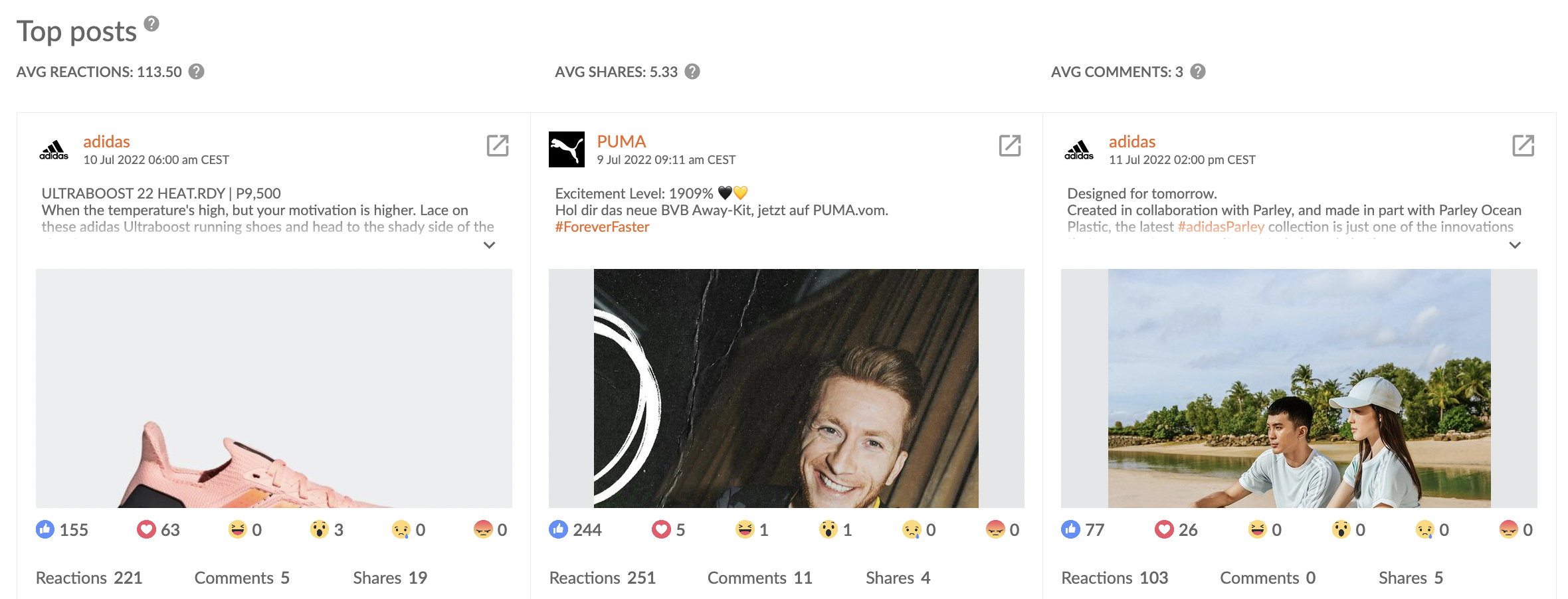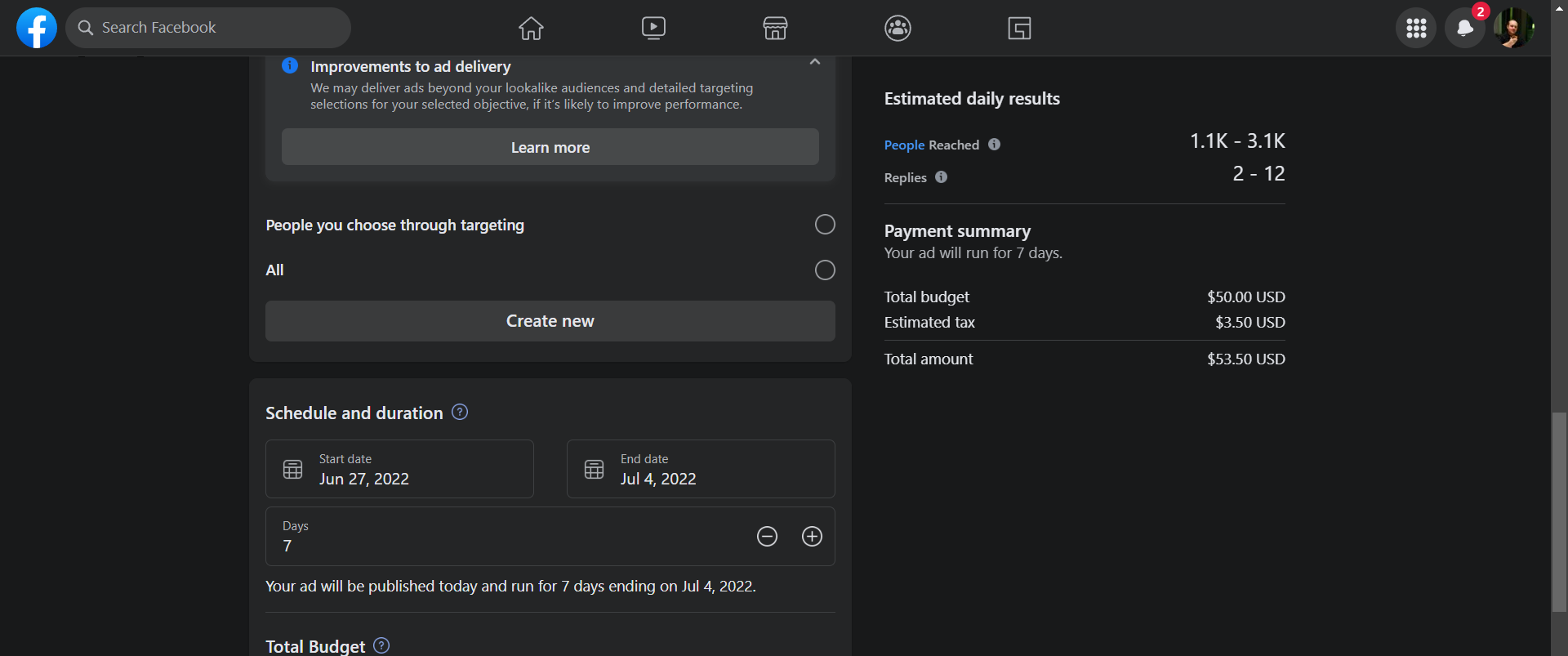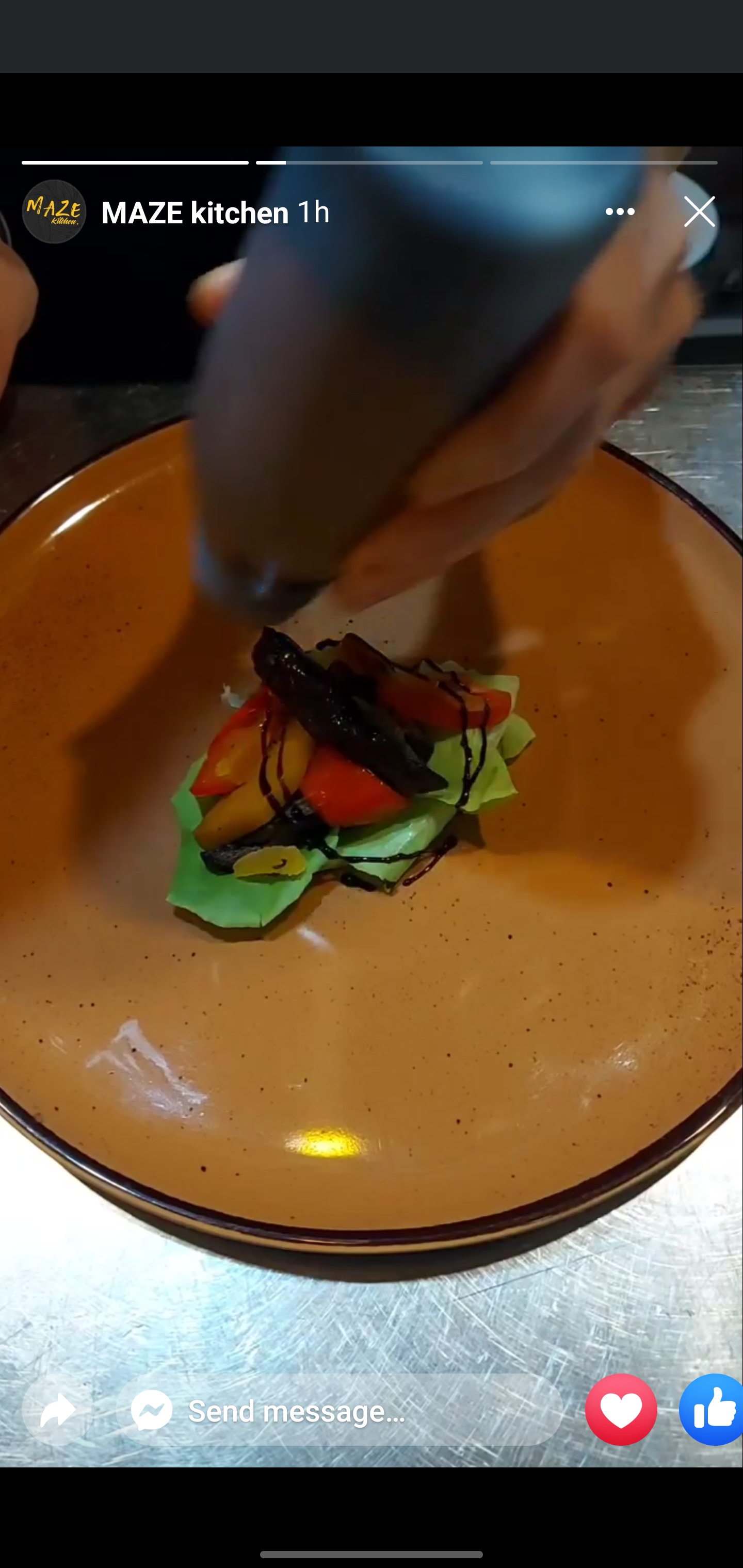Facebook marketing is relatively easy, but perfecting it is near impossible. Luckily, as a small business you’re most likely not striving for perfection yet, but looking for where to start and grow your brand.
With almost 3 billion users on Facebook, it’s an attractive option for any marketing team. But with a large number like that, there’s already a massive marketing industry behind it and your small business will most likely struggle to stick out of the crowd.
That’s what led you here. In this article, we’ll be taking a look at tips you can use to get the edge over large corporations and their marketing teams.
Here are 20 Facebook marketing tips to get your advertisements in the right hands!
1. Follow the competition
It’s a fact that you aren’t the first company to use Facebook, and chances are you won’t be the last.
That’s why it’s important to remember, “keep your friends close, and your enemies even closer.”
Use your competitors’ pages and posts to your advantage by gauging how well their pages and posts are received by users. By using a social media analytics tool, you can fully automate the process of checking your competitors’ content performance.

In Sotrender you can monitor your competitors’ top posts easily
Another great way to gauge how well your competitors’ posts are doing is by looking at how many likes they got and browsing through the comment section.
See what users are saying, and what they think could have been improved.
Also, check out their paid ads, and if possible, the ROI of those ads. For example, in Sotrender you can easily monitor your competitors’ average ad spend, as well as CPC and CPM costs.

Monitor your competitors’ ad spend in Sotrender
This will tell you an idea of how much they are spending on their ads, which should help you budget your ad spending.
2. Find an audience
Finding your audience might take some time, but the faster you can narrow your target audience, the faster your posts will start seeing higher conversion rates.
The first way to make sure you find your audience is making sure you use a voice or tone that fits with the audience you’re targeting.
If you are selling computer hardware and software, you might be able to write a bit more technical and formal, whereas if you’re selling clothing, you still want some specifications and details across, but you might be better off with a lighter tone.
Also, check your ads and posts for engagement and click-through rates so you can focus on ads and posts that did the best and copy their success.
If you’re still trying to reach out to an audience, you could make use of hashtags.
Yes! Hashtags are a thing on Facebook, although not as widely used, they work the same as on Instagram. Adding a relevant, but high-rated hashtag to your post will allow more people to see it when they search for your hashtag. If you’re not sure what hashtag to use, you can easily find a hashtag generator to help you.
3. Consider boosting your posts
Facebook offers a way to boost posts so that a much larger audience is reached, as well as users who might have high engagement.
Boosts can vary in quality, depending on the settings you choose, how long you want it boosted, and how much you pay for the boost.
Boosting a post for $50, running for seven days, should get around 3000 people looking at your post. Whether they engage with it, is another story.
The best way to boost the right post is by testing. After you’ve boosted a few posts, look at which boosted posts got the most engagement and try to create a formula with it.

4. Boost your ads
The best part about boosting though is boosting an ad. But before you can do that, you need to know how to post an ad first.
A well-written ad should get some engagement and hopefully drive traffic down your sales funnel, but imagine if you could get that ad out to a wider audience, while still targeting an audience.
Boosting your initial ad should help get it some engagement during the first few days, which should help drive up organic traffic towards it as well.
If you’d like to do a cheap test, you could create two ads, both advertising the same thing, and give them a boost each. Nothing too expensive, around $50.
From there, you should get enough data to compare the two advertisements and how well they performed. If one ad had a lot more impressions and engagement, then you can use that same ad again as a template on Facebook for any old ads that aren’t doing well, or new ones.
5. Write engaging advertisements
Have trouble writing a good advertisement for Facebook?
Writing an advertisement is easier said than done. Anyone can write the information and price down, but are you actually selling it?
Whilst writing an advertisement you need to sell the idea of your product to the user, not the actual product. This means you need to use powerful words and a great call to action that gets the user over the finish line. Entice the reader and make them feel like they truly need whatever you’re selling them.
You can pay for an ad and boost it as much as you want, but if your ad isn’t well written and presented no one is buying it.
6. Post with a small budget in mind
If you’re on a tight budget as a small business already, you might be thinking that it’s a waste of time to even have a budget for something like Facebook marketing.
It only causes more harm than good when you don’t plan your Facebook ads and boosts your budget.
Facebook has plenty of great tools as well like its A/B testing software to help you get the most out of your ad spending.
It’s important to set a budget so that you can effectively maximize your ad reach within the means of your budget. When trying to maximize your ad spending, look at things like the time of day you’re posting, the images you’re using, and what the content is about.
7. Structure your pixels strategically
Pixel is a piece of code that you can use on your website to help collect valuable data about the users on your website.
Pixel can measure engagement, help you optimize the website, as well as gauge and identify an audience that will be interested in your ads.
Pixel can help you target visitors who have similar interests and online habits that your current followers and customers. This sort of targeting will help you drive engagement and new leads much better than without.
![]()
8. Be strategic about your group name
One of the easiest, yet most important Facebook marketing tips is getting the name of your Facebook group right.
Creating a group name can be difficult. If you choose something too obscure, people won’t find it. Instead, you should choose a name that people are likely to be searching on Facebook already. This increases the chance of people organically finding your group and possibly joining it.
9. Create a Facebook group
Creating a Facebook group and growing it by focusing on your customer’s interests is important. Not only is a Facebook group a great way to keep your customers in the loop on all new news from your business, but it is also a community of sorts.
The larger and more tight-knit your community becomes, the more likely they are to trust you, your brand, and your products or services. They’ll also be more likely to recommend your brand to other people like friends and family. They might even invite them to your Facebook group.
The biggest issue with a Facebook group is starting it, and getting people to join at first. You’ll have to think of ways to reward your customers for following your page. You could offer promotions that are only posted on the Facebook group as a reward and a way to get more people to join your group.
Another recommendation is not to forget to set Facebook group membership questions in order to screen the new members and build the community with like-minded people, while reducing spam posts and messages.
10. Follow the lead
Blending in, within a marketing context, doesn’t mean being blind, or just going with the flow. Instead, blending in, within a marketing context, means following trends, being unique, and trying to be creative.
The internet is littered with unique, creative, and out-of-the-box memes, ads, and videos. Large companies like PepsiCo and even Specsavers have made some funny and creative ads.

Their “should’ve gone to Specsavers” campaign is funny, short, and to the point. Their video advertisements can be found everywhere, including on Facebook.
Ads should capture the spirit of the brand, whilst giving the audience enough information to know what you’re selling and why the audience needs your product.
Capturing a feeling of nostalgia is another great way to tug on the audience’s heartstrings.
11. Optimize your profile page
Your profile page should be easy to read, all information about your business should be available, as well as your contact info and if you have a physical store, an up-to-date address. Create a great-looking cover photo and banner as well.
The profile picture is usually the company logo, but the banner can be ever-changing. Use the banner as a way to promote new products, ads, or other interesting things related to your business.
Once you’ve gained some followers, it’s important to link your website to your Facebook page as well. Your website URL should usually be your business name or something related to your page.

As you can see, Coca-Cola’s classic logo can be seen as their profile picture. The banner picture is promoting their newest addition to the Coca-Cola soft drinks, Starshine.
12. Post Facebook stories regularly
Posting 100 posts a day won’t only annoy your followers, but will also create an information overload on your Facebook page.
Instead, use Facebook stories for less important posts and videos.
Facebook stories are much less intrusive, but also feel casual, so don’t post anything important on there.
Facebook stories can be used to create fun polls, video posts about your day, or links that might interest your audience.
Essentially, Facebook stories can be used to engage with your audience throughout the day, without being serious or promotional at all.

Here is a Facebook story from a local restaurant, showing how one of their dishes is put together.
13. Use testimonials
Another excellent Facebook marketing tip is testimonials.
Testimonials and reviews, which can both be utilized on Facebook, offer you the chance to show other customers your value, and why your current customers appreciate your brand.
Testimonials are a sort-of word of mouth that adds value to your brand, as well as shows that your brand can be trusted.
According to Verizon, word-of-mouth marketing is the primary factor of 20% – 50% of sales.
Testimonials and word of mouth are especially important when your business is just starting. A bad reputation from the get-go means your business is dead before it even started.

This is a local Bistro’s Facebook page, with reviews from customers. The review page acts as testimonials from customers who have visited your shop or bought your product.
14. Use Facebook’s product catalog ads
Facebook has a product catalog option on the Commerce Manager. Here you can create plenty of catalogs for the things you are selling.
Catalogs can be managed easily. Things like the name of the catalog, images in it, the description, and the prices. Don’t worry that things are set in stone after creating a catalog, you can change anything at any time.
If you want, you can also select certain items or catalogs to feature in your ads.
Make sure to add your language and country info, this will help Facebook correct the data for users in other countries, so the product prices and information is correct.
Catalogs make it easier for users to find what they’re looking for, as well as give your page a more professional feel, which helps build trust.
15. Target your audience
It might sound counterintuitive, but reducing your audience has plenty of benefits and should be a goal for any business.
Sure, casting a wide net at the start of your funnel is a good idea, but you should quickly weed out the time-wasters from the genuinely interested.
The faster and more effectively you do that, the faster you’ll end up with truly interested customers who are willing to pay for your product. These targeted users will have a much higher conversion rate than those who aren’t.
Small businesses with lower budgets shouldn’t be wasting money on testing ads too much, every cent spent on advertising should yield results.
This is why it’s important to get the right audience, even if it means fewer people seeing the ad.
16. Post with intent
Posting for the sake of posting is a horrible idea! If your posts contain no information or something interesting for your audience, they will eventually get bored, stop reading your posts, or even stop following your brand completely.
The best practice when posting content is to relate to your audience.
Ask yourself whether what you’re posting will bring any sort of value to your followers’ day.
If the answer is no, then you should rethink what you’re posting.
You should also make sure if you are trying to sell something on your post, that you add a call to action. There should be something to entice your followers to go through with the purchase. Remember to add your website’s link, or possibly an incentive landing page that is set up for conversion.
17. Create a private community page
Similar to starting a Facebook group, but this time we’re keeping things private.
Setting your page to private and invite-only creates a sense of exclusivity. This exclusivity will make your customers feel special and like they are part of the business.
If you’ve got a physical shop, you can invite regulars to the page, where you could post specials and promotions first before other customers know.
This could entice them to join your page, where you could post the promos, as well as ads and website links.
18. Don’t post without a content calendar
Content calendars are standard practice in marketing teams and content creators. It’s beneficial when working in larger groups since a content calendar allows people to track what needs to be done and what they should be working on at all times.
If your marketing team is going to get anything done by their deadlines, you should be using a content calendar.
There are plenty of excellent apps that you can use to schedule your calendar with employees and colleagues.
19. Go Live on Facebook
Going Live on Facebook is still an underrated marketing tool that should be reconsidered by businesses. When it comes to Facebook marketing tips, keep this one in your back pocket at all times.
Just look how well TikTok stars can sell products through live streams and videos.
It’s a great way to connect with your audience, possibly showcase some products or services and answer questions followers have.
Not only are you advertising your stuff for free, but you’re getting a chance to show the audience who you are, what the brand is and stands for, and what you’re selling.
Going live on Facebook is criminally undervalued by marketing teams, but it should start taking off in the next few years, which is why now is a great time to start!
20. Don’t obsess over vanity metrics
It can be easy to fall trap of vanity metrics like the number of likes your post got or how many people commented on it. These aren’t that important for marketing on Facebook.
With a small budget, a company cannot afford to have things like this bother them. A limited marketing budget should push your team to be more creative and use your resources to their fullest.
Make sure to focus on things that count: actionable metrics, like post engagement and how many users, clicked through the ad, and then how many went through all the way to purchase the product.
Likes and comments aren’t usually related to these important factors, so don’t worry too much.
Start using these Facebook marketing tips today!
If you follow these 20 Facebook marketing tips, you’ll be on your way to getting more followers and converting them on Facebook.
Don’t miss out on the nearly three billion users out of fear. Instead, focus on your ad goals and target audience. If you can narrow those two important things, you’re already further ahead than most small businesses.







